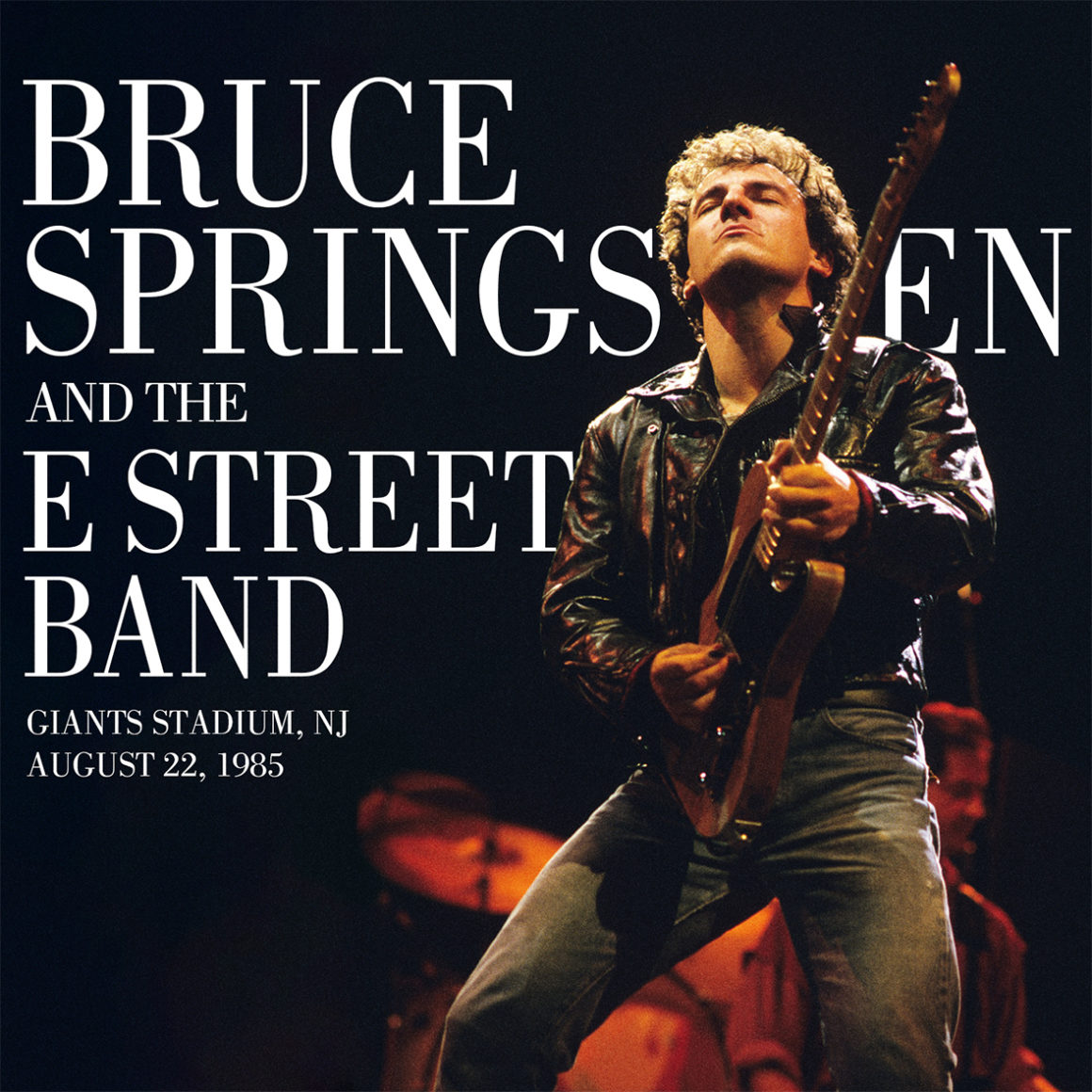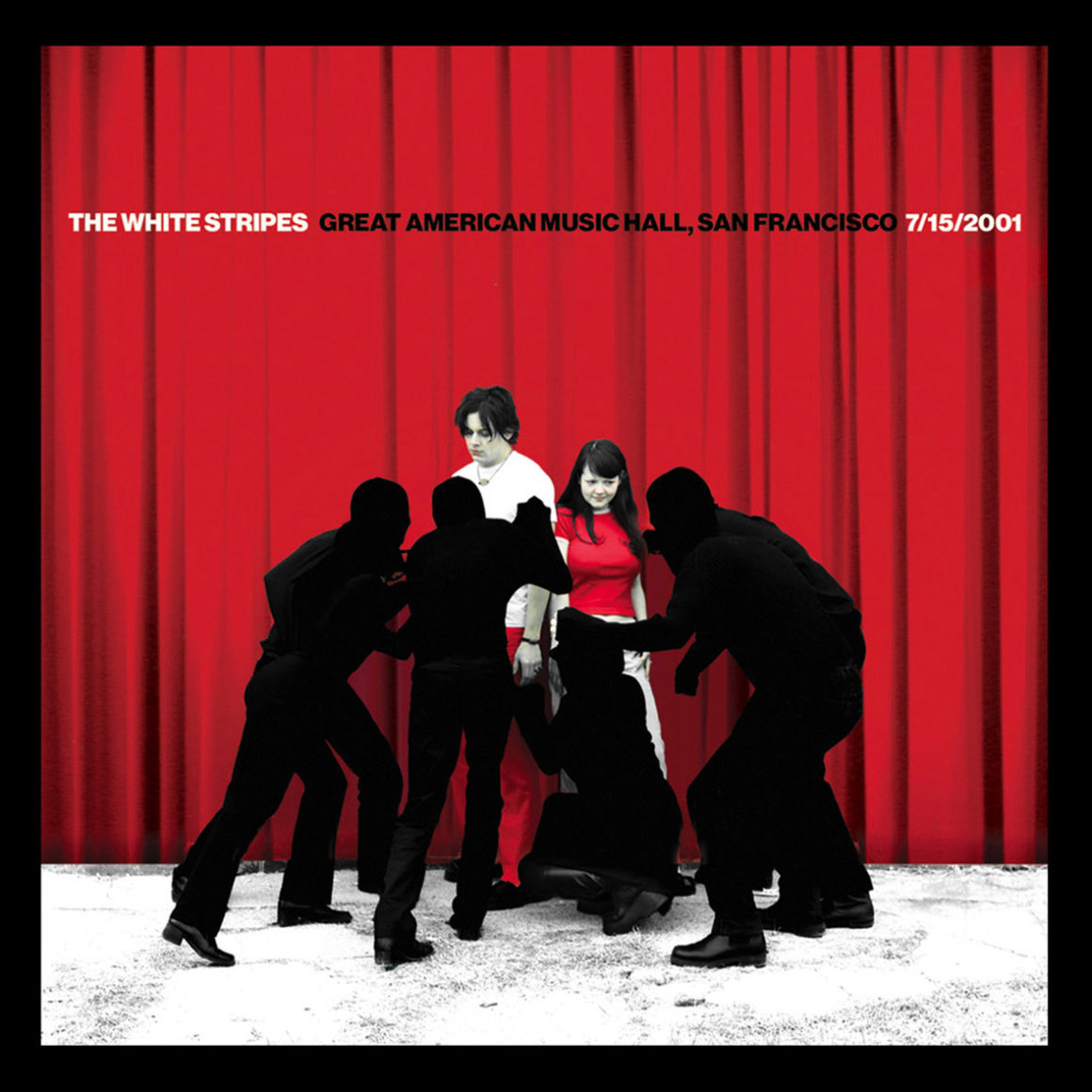
Bruce Springsteen and the E Street Band
LISTEN NOW: Giants Stadium, E. Rutherford, NJ, August 22, 1985
By Erik Flannigan
Bruce Springsteen has enjoyed many a Jersey homecoming: Red Bank 1975; Passaic 1978, Meadowlands 1981, 1984, and 1999; Asbury Park and Freehold 1996, to name only a few. But surely none was bigger than the six-show run Bruce and the E Street Band performed at Giants Stadium in the summer of 1985, arguably the zenith of the Born in the U.S.A. Tour.
Springsteen’s Giants Stadium stand kicked off on Sunday, August 18. It was a tight load-in for the crew (something Bruce acknowledges at the end of this show), as the NY Giants played a preseason NFL game there the night before, making for a quick turnaround from football to on-field concert. As I’m sure at least one of you is wondering: the Giants beat the Green Bay Packers that night by the extraordinarily rare score of 10-2.
Bruce and the band went on to perform at the stadium Sunday and Monday, took Tuesday off, and returned for shows Wednesday and finally this performance on Thursday. All four nights were professionally recorded, with songs from August 19 and 21 later featured on Live/1975-85. This release marks the debut of the August 22 recording. After a brief trip to Toronto for two shows north of the border, the Giants Stadium homestand wrapped with gigs on August 31 and September 1. The remote recording truck did not return for the last two concerts.
Needless to say, each of these Giants Stadium shows was an incredibly tough ticket. Sure, Bruce and the E Street Band were playing a much bigger venue than nearby Brendan Byrne Arena, where they did ten nights the previous summer, but the fanbase had also increased exponentially. The narrative of New Jersey’s local hero returning home as the biggest rock star on the planet was plastered across newspapers, radio, and television.
As such, the mood of the Giants Stadium stand is decidedly celebratory. The people came for a party, they came for Born in the U.S.A., and Springsteen didn’t disappoint. At the 8/22/85 show, he performed ten of the album’s 12 songs, plus the nearly-as-popular b-side, “Pink Cadillac.” Fratello di sangue Stevie Van Zandt re-joined his bandmates for a rollicking encore that only slowed down for the Garden State’s other unofficial anthem, Tom Waits’ “Jersey Girl.” Yet even as he met the fans’ mandate, Springsteen found ways to weave moments of musical beauty into the merriment.
The first set opens big as it had to, with “Born in the U.S.A.,” “Badlands,” and “Out in the Street” giving the people exactly what they came for. Credit Bruce for retaining the mini-Nebraska set established in shows the prior year, even in this enormous setting. August 22 features “Johnny 99” and a crackling “Atlantic City,” the latter marked by a great Springsteen vocal (“Debts that no honest MAN COULD PAY”) and fine guitar work from Nils Lofgren. The kindred “Seeds” fits perfectly with the Nebraska songs, and all three are delivered at stadium scale complementing their acoustic roots.
The contrasting performance of “The River” that follows is more intimate and a standout in the set, riding superb piano work from Roy Bittan. “I’m Goin’ Down” and “Working on the Highway” came into their own in 1985, and these are exemplary versions, perhaps as good as either ever got, with “I’m Goin’ Down” in particular fully developed including some wonderful guitar at the end that you’ll likely find unfamiliar.
“Trapped” sets a new mood and takes the audience on a dynamic ride up, down, and up again—you can feel the entire stadium rise for the song’s exalted crescendos. The remainder of the first set goes down easy, with a fun call-and-response preceding “Glory Days” (the best of which is “Guba, Guba, Guba, Guba”) and an enthusiastic “The Promised Land,” highlighted by backing vocals from Patti Scialfa and an invitation to “Come On!” and join in during the song’s bridge.
That sets the stage for Springsteen’s request for support of local charitable organizations leading appropriately into “My Hometown.” The first set wraps joyfully with “Thunder Road,” and the roar that greets its arrival tells you the good people of New Jersey are having the night they wanted. The chorus to “Thunder Road” seems to acknowledge that, especially when Bruce and Patti’s voices go up extra high as they sing, “Sit tight, take hold, Thunder Road.”
A straightforward but satisfying second set follows the standard 1985 stadium show template, with leaner, more muscular arrangements of songs like “Cover Me” and “Dancing in the Dark” compared to their arena editions. The same can be said for “Downbound Train,” and Bruce adds some appealing vocal tweaks, especially the way he holds the words “downbound train” at the end of the second chorus.
The second-set standout is “Pink Cadillac.” You might remember the long intro with Bruce talking about Adam and Eve, temptation, and the Garden of Eden in New Jersey. He has never spun this fable better. The band holds their own too, laying down a funky synth groove to start, eventually building “Pink Cadillac” into a sinewy, roadhouse banger, with sleazy saxophone from Clarence Clemons and Roy Bittan giving the Killer a run for his money on piano.
Before the final fun begins, there’s a sentimental moment where Bruce dedicates a short, solo acoustic version of Woody Guthrie’s “This Land Is Your Land” to his first manager and professional supporter, Tex Vinyard. He also reminds the audience—in words as timely today as ever—that “the promise of what our country was supposed to be about….[is] eroding every day for many of our fellow Americans.” Before an outstanding “Born to Run,” Springsteen utters the memorable phrase that sums up the key to that promise so perfectly: “Nobody wins unless everybody wins.”
Cementing the status of 8/22/85 as a special night, Springsteen invites Stevie Van Zandt to join the band for the remainder of the encore. Having heard the pair perform “Two Hearts” night after night on the Reunion tour, we can underestimate how meaningful Stevie’s appearance and that song would be to the assembled masses in 1985. Another River song, “Ramrod” keeps things jocular, with Van Zandt relishing his vocal contributions, including a couple of solo lines in the final verse.
No Jersey Shore bar band worth their salt would fail to pull out “Twist and Shout” for this occasion. It is rock ‘n’ roll’s ultimate singalong, and within it, Springsteen indulges in a charming bit of adulation baiting with “Do You Love Me?” Finally, “Jersey Girl” serves as the perfect summer-night coda for the Garden State.
That would be more than enough for most, but the expanded band isn’t done quite yet. Bruce goes back to the River one last time to a song he wrote expressly for a summer party, “Sherry Darling,” driving home the band-fan relationship as he sings, “I got you and you got me.”
Springsteen and the E Street Band’s Giants Stadium shows were New Jersey’s answer to the Canyon of Heroes, ticker-tape parades in concert form. In this case, the world-conquering, returning heroes were performing their mighty deeds even as the confetti flew, celebrating with their home-state audience by doing the thing they do best. As Springsteen would sing decades later in “Wrecking Ball,” this is where Giants came to play. Yes they did.
